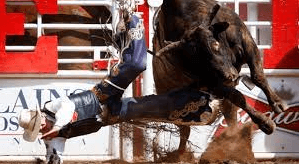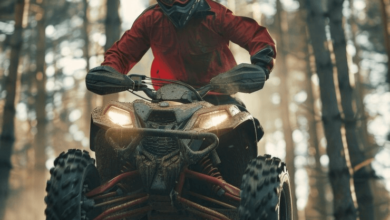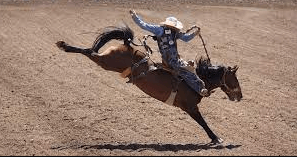What Are The Risks Of Bull Riding?

Bull riding, a popular and exhilarating sport, is not without its risks. This article aims to explore the potential dangers associated with bull riding in an objective and informative manner. By examining the physical toll, psychological and emotional risks, as well as long-term health implications, readers will gain a comprehensive understanding of the potential hazards involved in this daring activity.
The physical toll of bull riding cannot be understated. Riders are constantly exposed to the risk of serious injuries such as concussions, broken bones, and internal organ damage. The sheer power and unpredictability of these massive animals make it a challenging feat to stay on for the required eight seconds.
Additionally, the forceful impact during falls or when thrown off can cause severe trauma to various parts of the body. Understanding these physical risks is crucial for individuals contemplating participation in bull riding as they weigh their desire for freedom against potential harm.
On a psychological level, bull riders face unique challenges that can have lasting effects on their mental well-being. The intense pressure to perform at high levels consistently can lead to anxiety and stress disorders. Furthermore, riders may experience fear or post-traumatic stress following traumatic incidents or injuries sustained while participating in this sport.
It is essential for individuals considering bull riding as an outlet for their desire for freedom to recognize these psychological risks and seek appropriate support systems if necessary.
In conclusion
Potential Injuries and Physical Toll
The sport of bull riding poses significant risks in terms of potential injuries and the physical toll it can take on riders.
The recovery process for injuries sustained while bull riding can be lengthy and challenging.
Riders are often subjected to intense physical trauma, including broken bones, concussions, sprains, and strains.
These injuries require extensive medical treatment, rehabilitation, and time away from the sport to heal properly.
Additionally, safety precautions such as wearing helmets, protective vests, and gloves are essential but cannot completely eliminate the risk of injury.
Despite these measures, the sheer power and unpredictability of bulls make bull riding an inherently dangerous activity that can have long-lasting effects on a rider’s physical well-being.
Psychological and Emotional Risks
Psychological and emotional challenges associated with participating in bull riding may include managing fear, anxiety, and stress levels, which can be heightened due to the unpredictable nature of the activity. To successfully engage in this sport, mental resilience is crucial.
Bull riders must learn to control their emotions and remain focused amidst the fear that comes with facing a powerful animal. Fear management is essential as riders need to overcome their natural instinct to protect themselves when confronted with a charging bull. They must learn how to channel their adrenaline rush into concentration and quick decision-making instead of succumbing to panic.
Additionally, bull riding requires participants to develop strategies for coping with post-event stress, such as dealing with disappointment or recovering from injuries. Developing these psychological skills is vital for bull riders who wish to excel in this challenging sport while maintaining their mental well-being.
Long-Term Health Implications
Long-term participation in bull riding can have significant health implications, particularly in relation to chronic pain and joint issues.
The intense physical demands of the sport can lead to ongoing discomfort and potentially long-lasting damage to joints, muscles, and ligaments.
Additionally, repeated head injuries sustained during bull riding can result in brain damage and cognitive decline over time, posing serious risks to the rider’s overall well-being.
Chronic pain and joint issues
Chronic pain and joint issues, prevalent among bull riders, are associated with the repetitive impacts experienced during rides.
The physical demands of bull riding put immense pressure on the body, leading to long-term consequences for the riders’ joints.
The constant jolts and sudden movements can result in joint instability, ligament damage, and cartilage wear.
As a result, many bull riders suffer from chronic pain in their knees, hips, and spine.
This persistent discomfort can significantly impact their quality of life both during and after their career in the sport.
To manage these issues, bull riders often turn to arthritis management techniques and rehabilitation programs that focus on strengthening the affected areas.
These methods aim to alleviate pain and improve functionality by promoting muscle strength and flexibility while also reducing inflammation.
However, it is important to note that despite these efforts, chronic pain and joint problems remain a significant risk for individuals engaged in this extreme sport.
Brain damage and cognitive decline
Neurological repercussions, such as brain damage and cognitive decline, are potential outcomes associated with the intense physical demands endured during bull riding.
The forceful impact of being thrown off a bucking bull or trampled by its hooves can lead to traumatic brain injuries (TBIs), ranging from concussions to severe skull fractures. These TBIs can cause long-term cognitive impairments, affecting memory, attention, and problem-solving abilities.
Read also: What Are The Main Rules Of Endurance Riding?
Furthermore, repeated head trauma in bull riders has been linked to chronic traumatic encephalopathy (CTE), a degenerative brain disease that results in progressive cognitive decline and behavioral changes.
The combination of high-risk maneuvers and unpredictable animal behavior makes bull riding an inherently dangerous sport for participants, putting them at significant risk of sustaining brain injuries and experiencing subsequent cognitive impairment.
Frequently Asked Questions
How long does it take to recover from a bull riding injury?
The recovery time for bull riding injuries can vary depending on the severity of the injury. It typically takes several weeks to months for a full recovery. The rehabilitation process involves physical therapy and restorative exercises to promote healing and restore function.
Are there any safety measures in place to protect the riders during a bull riding event?
Safety measures are in place to protect riders during bull riding events. These measures include the use of protective gear such as helmets, vests, and padded clothing. Additionally, safety guidelines and regulations are enforced to minimize the risk of injuries.
What kind of training or physical preparation do bull riders undergo?
Bull riders undergo intense training techniques and physical conditioning to prepare for the demands of their sport. For example, they may engage in exercises such as weightlifting, cardio workouts, and balance training to enhance their strength, endurance, and agility.
Are there any age restrictions for participating in bull riding?
Age restrictions for bull riding vary, with most professional organizations requiring participants to be at least 18 years old. Safety measures such as helmets, vests, and protective gear are enforced to minimize the risk of injury during this intense and dangerous sport.
Are there any regulations or rules in place to ensure the humane treatment of the bulls used in bull riding events?
Regulations and guidelines are in place to ensure the humane treatment of bulls in bull riding events. These measures aim to prioritize animal welfare, preventing unnecessary harm or cruelty towards the animals involved in these activities.
Conclusion
Bull riding is a dangerous sport that poses significant risks to both the physical and psychological well-being of its participants.
Potential injuries include broken bones, concussions, and spinal cord damage, which can have long-lasting effects on an individual’s health. The toll this takes on their bodies can be severe and may require extensive medical treatment.
Moreover, bull riding also exposes riders to psychological and emotional risks. The constant fear of injury or even death creates immense stress and anxiety for participants. This pressure can lead to mental health issues such as depression and post-traumatic stress disorder (PTSD). Additionally, the competitive nature of the sport can contribute to feelings of inadequacy or failure in riders.
The long-term implications of bull riding should not be overlooked either. Even if a rider manages to avoid serious injury during their career, they may still experience chronic pain and mobility issues later in life due to the strain placed on their body over time. This has been observed in retired bull riders who often suffer from arthritis, joint degeneration, and chronic traumatic encephalopathy (CTE).
In conclusion, bull riding carries inherent risks that extend beyond physical injuries. The toll it takes on riders’ bodies is substantial while also exposing them to psychological challenges that can have lasting effects on their mental well-being. Furthermore, the long-term health implications associated with this sport cannot be ignored. It is crucial for individuals considering participating in bull riding to carefully weigh these risks before engaging in such a perilous activity.
Rhetorical Device: Through stark facts and objective analysis, we are confronted with the harsh reality of bull riding’s dangers – both physically and mentally. As we delve into the potential injuries inflicted upon riders’ bodies over time, there is an undeniable sense of empathy evoked within us for those who face these perils head-on.
The chilling realization that even if one escapes immediate harm during their career, they may still succumb to chronic pain and degenerative conditions later in life, leaves us with a profound sense of unease. The objective tone allows the information to speak for itself, leaving the reader with a heightened emotional response to the risks inherent in bull riding.



